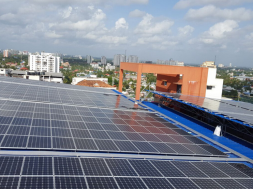
The analysis discusses the future of coal in Indian energy systems and its implications on international coal trade
New Delhi: India’s transition away from coal to achieve the 2 Degrees compatible scenario, taking into account its national circumstance as well as the global ambition on climate change, will require deeper decarbonization, a study led by Indian Institute of Management-Ahmedabad (IIM-A) Professor Amit Garg has found. However, the country is on track to meet its Nationally Determined Contributions (NDC) commitments, it said.
The team has modelled three transition pathways which address the debates on future of coal in a report titled “Coal transition in India: Assessing India’s energy transition options”. The report authored by Saritha S Vishwanathan, Amit Garg and Vineet Tiwari has been co-published as part of an international research project which aims to develop feasible trajectories for transition in the coal sector in major coal consuming countries. French think tank IDDRI and UK-based research network Climate Strategies are international partners of this study.
The analysis discusses the future of coal in Indian energy systems and its implications on international coal trade including the possibility of increased stranded assets both in coal and power sectors as a result of coal transitions. The report also discusses the impacts of critical natural resource such as water on coal-based power plants.
For a 2˚C compatible scenario, India will require stringent steps to ensure maximising the efficiency of existing coal fleet. The study proposes this to happen through retiring old coal plants, scaling up new and alternative fuels, reducing end-use energy demand, and developing a coherent strategy for future energy system to manage risk and avoid stranded assets.
“Investments of up to $5 trillion are required until 2030 for transforming the energy systems. Power sector leads the investment requirements at $2 trillion, followed by industry and transport at around $1 trillion each, buildings at $0.7 trillion and agriculture at $0.3 trillion. Stranded assets in the thermal power sector could also create pressure on financial institutions that have provided debt for constructing these plants to the tune of $90 billion during 2006-2014,” Gag said.
The report states that India is sustaining one of the fastest GDP growth rates in the world currently at around 8 per cent per annum and is well on track to meeting and even surpass its NDC Paris commitments for 33-35 per cent reduction in GHG intensity of its GDP during 2005-2030 and 40% share of non-fossil electricity capacity by 2030. Coal, however is projected to remain the mainstay of Indian energy systems at least until 2030.















